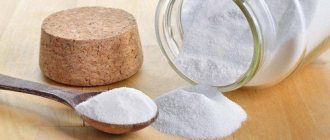Correctly selected washing mode is the key to long service life of clothes. Modern washing machines are equipped with a large number of programs to optimize this process.
One of the basic modes is delicate washing.
Read the article about what it is, what products it is suitable for and how to use it correctly.
What fabrics can be washed?
The delicate mode is intended for washing items made from fabrics that require careful handling. You can find out more information by studying the label. On it, in the form of signs, recommendations for washing various things are indicated.
Delicate wash is intended for items made from the following types of fabrics:
viscose;- polyester;
- elastane;
- lycra;
- silk;
- wool;
- organza;
- veil and more.
They resort to its help when things have a lot of additional attributes in the form of:
- rivets,
- lace,
- quilling,
- buttons,
- sequins,
- embroidery
In the delicate mode you can wash tulle and thin curtains, thermal underwear. It is suitable for caring for products prone to shedding, shrinkage, and stretching.
Let's be honest about the regime
It is designed for cleaning items made from thin or wrinkled fabrics. These include silk, viscose, linen - as well as wool, microfiber and many other materials. Improper washing of clothes made from such fabrics is fraught with a sad outcome: puffs, pilling, stains - thus, shirts and sweaters will be hopelessly damaged. The gentle wash function is designed to avoid these problems.
It is not difficult to understand whether an item requires such a regime when washing: each item has a label attached to it, which contains a recommendation on the type of cleaning. The delicate wash icon on the label looks like a drawing of a bowl of water with two horizontal lines underneath it. Some manufacturers put numbers in the basin - 30 or 40. They indicate the temperature at which it is better to wash this item (at 30 or 40 degrees, respectively).
Differences between delicate washing and other modes:
- using more water (thus the mechanical impact on clothing becomes gentler);
- low temperature (this reduces the shedding of things, they will not recolor each other during washing);
- slow and smooth movements of the drum (this ensures that the item does not tear/roll and the decorations remain in place);
- delicate spin (with fewer revolutions - 600-800 per minute, which does not damage clothes).
Peculiarities
Delicate wash has the following features:
- The water temperature when selecting a program is 30 degrees.
- The spin speed does not exceed 400-600 rpm, depending on the SMA model.
- Drying is not provided in this mode.
- To indicate delicate washing, manufacturers use an image of a basin with water containing the number 30. Sometimes there are icons in the form of a feather, a flower, a butterfly, or a basin with a hand lowered into it.
- Program execution time varies. On average, a cycle takes about 60-80 minutes. The fact is that prolonged contact of thin fabrics with water is undesirable.
- Delicate washing is always accompanied by increased water consumption.
What it is?
Probably everyone has things that require careful care. These include fabrics such as lace, silk, satin, chiffon, organza. But there is a risk of ruining clothes if you care for them incorrectly. Usually materials deteriorate when washed, for example, with an inappropriate cycle. But they require delicate washing. This keeps things beautiful for a long time.
Modern washing machines have different modes needed to work with different fabrics. Many have a “delicate wash”. This is gentle care for clothes. It is this that must be installed during each procedure.
On the control panel in washing machines, you can set modes depending on the fabric. There you can select the temperature, spin and other characteristics. To understand the principles of setup, just read the operating instructions for the equipment. A suitable mode will preserve the appearance of the material for a long time.
Terms of use
For washing to live up to its name, the following rules must be followed:
do not set the water temperature above 30 degrees;- the maximum permissible spin speed should be 600 rpm, if possible, it should be abandoned altogether;
- It is better to disable additional or double rinsing;
- colored items should be washed separately from whites and blacks;
- the drum should be loaded halfway - the more things are put in it, the lower the quality of washing; the maximum permissible weight of dry laundry is 1.5 kg;
- if the water is hard, it is recommended to use a conditioner;
- delicate washing does not require pre-soaking, so the tray numbered I or marked with the letter A is left empty.
Handwash
Manual cleaning will help keep things in excellent condition for as long as possible. Which washing is better is a controversial issue, but every housewife is free to choose her own method. To ensure that your favorite things are not damaged during manual care, you must adhere to the basic rules:
- the water temperature should not exceed 25-30 degrees,
- Do not rub or twist the fabric too much,
- you need to slightly squeeze the item and release it so that it does not look wrinkled,
- the product must be allowed to drain into the basin,
- drying is carried out in a horizontal position so that the fabric does not stretch.
Expert opinion Kristina Samokhina Experienced housewife. Ask a question to an expert To clean such things, it is recommended to use a gel rather than a powder. Stains can be removed with a water-based stain remover.
Detergents
Delicate fabrics require the use of liquid detergents. Gels are best suited for this purpose. If the product is heavily contaminated, you can use capsules that are placed directly into the SMA drum. They contain a higher concentration of surfactants, which makes it possible to get rid of difficult stains faster.
The advantage of using gels is that they do not contain chlorine, phosphates and enzymes, if we are talking about quality products. This will avoid color fading and damage to delicate fabrics.
Classic washing powders can be used if there is no alternative. However, it must be taken into account that they are less easily washed out of the fabric fibers, which requires turning on the additional rinsing function. The longer an item is exposed to mechanical stress, the higher the likelihood that pills will appear on it.
If possible, it is better to use products that match the type of fabric. There are gels on sale for:
- black and white things,
- for wool,
- cashmere,
- silk, etc.
What are the dangers of delicate washing?
“Doesn’t the sensitive program have any drawbacks?” - you ask with disbelief and you will be right. Like any phenomenon, gentle washing has a number of disadvantages that you need to be aware of.
The first and very significant (what a pun!) drawback is the proliferation of bacteria. Washing in a delicate program occurs at low temperatures - 30-40 degrees. This means that bacteria and microbes that have settled on clothing do not die. Not only that: they also manage to multiply and jump from washed linen to towels, dishes, and our hands. In the United States, a special study was conducted on this matter. His results showed: on underwear washed in a delicate cycle, feces were found - 0.1 grams on each item. And this is a breeding ground for bacteria. And it is useless to fight them solely by sorting clothes by color and/or fabric - you can defeat microbes only with the help of high temperatures, the researchers conclude.
If possible, try not to wash at least children's clothes at low degrees. As for “adult” products, pre-soak them in a soap solution, and thoroughly soap stains on clothes with laundry soap.
In addition to bacteria, powder also remains on clothes washed on the delicate cycle - which is why it is better to use liquid products. Dust mites, a source of allergic reactions, also “linger” on bed linen. They die exclusively in boiling water. The best thing you can do in this situation is not to buy bed linen made of silk and other “delicate” fabrics. It would be correct to purchase a bed made from materials that can withstand temperatures of 90-95 degrees.
It has long been known: “Forewarned is forearmed.” Use our recommendations, and no difficulties in this matter will affect you!
Preparing laundry
Preparing items for delicate washing involves performing the following steps:
Things are sorted by color. Black, colored and white items should be washed separately.- If things are heavily soiled, they are pre-soaked in a basin of warm water.
As a safe product, you can use a liquid stain remover, which is applied to the stain point by point, according to the instructions. A popular folk remedy is soda solution. - To safely wash openwork linen or napkins, they can be attached with a few stitches to dense fabric of a similar color and placed in this form in the drum.
- Silk and cashmere are washed separately.
- Things must be turned inside out.
- Buttons and zippers are closed, pockets are turned inside out to make sure there are no foreign objects in them.
- You should purchase liquid detergent in advance.
If you are washing a product for the first time, it is better to first conduct a small test for pigment stability.
To do this, dissolve the gel in water in the concentration in which it will be used in the washing machine and apply it to an inconspicuous area of fabric for 10-15 minutes. Then any white material is applied to it. If there are no streaks left on it, you can safely start washing.
How to set up delicate mode yourself?
If suddenly your device does not have such a mode, don’t worry, we will teach you how to change the washing parameters to carefully care for delicate items.
- Choose one of the short modes. What is the optimal time? About 40 minutes.
- Set the temperature to 30-40°, no more.
- You can program a double rinse.
- Adjust the spin speed. 800 is the highest limit. But sometimes, you should use drain without spinning - to do this, read the information on the tags of your items.
- Turn off drying and ironing if these functions are provided in your machine.
Some modern Samsung washing machines (WW5000 and WW60K series) have the Eco Bubble function. During washing, air bubbles are produced, which help to dissolve the granules of the washing substance and bring them to the very fibers of the fabric. During this process, even the most delicate and elegant things remain safe and sound, but at the same time they are washed very effectively. Such a delicate wash in a washing machine brings amazing results and also saves detergent, water and energy.
Drying and ironing after
Features of drying clothes after delicate washing:
- if the manufacturer allows automatic spinning, then it should be performed at the lowest possible speed;
- if machine spinning is prohibited, after washing the items are removed from the drum, wrapped in a terry towel and allowed to absorb excess moisture - most delicate fabrics do not tolerate twisting well;
- after completion of the cycle, the laundry must be removed from the drum immediately;
- You should not hang the products; it is best to leave them to dry on a flat surface, manually straightening out creases and folds.
The product should be ironed slightly damp, turning it inside out. The iron is moved carefully, without applying force or putting pressure on it. For greater safety, cover the fabric with a layer of gauze. If possible, use a steamer.
Drying products
The washing process without spin means that items will contain excess moisture after being unloaded from the machine drum. You can remove it by first drying it in a terry towel.
Woolen products are first dried on a horizontal surface, placing a dense, dry, lint-free cloth underneath. The item is straightened out, restoring its shape, avoiding creases. In the process of absorbing moisture, the lining is changed to dry.
Silk, viscose, chiffon blouses are dried without direct sunlight, in the open air. The product is transferred to a vertical position only after complete drying, choosing wide hangers for storage.
Do you wash by hand?
Oh yes! No
Icon on washing machines of different brands
Depending on the brand of washing machine, the program will have some differences:
Bosch . The mode may be called “Delicate wash”, “Delicates”, “Silk”. The spin speed is 400 rpm, the water temperature is 30 degrees, the washing duration is half an hour.- . Default settings: water heating – 30 degrees, spin speed – 400 rpm. With these parameters, the wash lasts 48 minutes. If you turn off water heating and spin, the cycle time will be reduced to 27 minutes.
- Indesit . The water heats up to 30 degrees, the spin does not exceed 400 rpm. The cycle lasts 80 minutes. The maximum drum load is 1.5 kg.
- Samsung . The water temperature can reach 40 degrees, and the spin speed is 600 rpm. The cycle lasts 1 hour.
- Candy . The manufacturer classifies the following modes as delicate programs: “Delicate”, “Wool”, “Hand Wash”. The water temperature is 30-40 degrees. The cycle lasts from 40 to 59 minutes.
Let's sum it up
The delicate mode has a gentle effect on the shape and color of the item. The washing temperature is reduced and the duration is minimal. During such washing, your silk or wool products, lace and some synthetic fabrics will not be deformed - they will not shrink or stretch, will not lose color, and at the same time will be effectively cleaned. There are many advantages of a delicate machine cycle over hand washing. This saves effort and time, and the absence of increased friction, rinsing in plenty of water and gently spinning.
It’s worth entrusting your items to the delicate cycle in a washing machine from a trusted manufacturer. Then excellent results and clean clothes are guaranteed to you!
See also:
- 10 best washing machines from Samsung
- 10 Best Top Loading Washing Machines
- 10 best Hotpoint-Ariston washing machines according to customer reviews
- 10 best Electrolux washing machines according to customer reviews
- 10 best ATLANT washing machines according to customer reviews
Advantages and disadvantages of the program
Pros of using the program:
- careful attitude to things;
- color protection and extension of product life;
- short cycle time, which saves electricity.
Minuses:
- increased water consumption - however, this should not become an obstacle to using the program, since items made from delicate fabrics cost more than a few liters of water;
- difficulties in removing stubborn stains - to achieve results, sometimes you have to soak things in advance and use stain removers;
- the need to use liquid detergents.
Requirements for washing powder
A properly selected detergent must meet the following requirements:
- The powder should be easily soluble in water.
- It is necessary to exclude the situation when, after the end of the procedure, unwashed grains of powder remain among the fibers of the fabric.
- The presence of aggressive components in the detergent is unacceptable: enzymes, chlorine or the like.
- As a result, the color of the laundry should not change.
- If the selected washing powder gives clothes an unpleasant odor, then it will not be suitable for items made of delicate fabrics.
- After completing the procedure, the washed laundry should not become rough or hard to the touch. It is necessary that it remains soft and tender.
Professional dry cleaning
These symbols are intended for dry cleaning professionals. They will tell them how to properly clean your product, which compounds are allowed to be used to clean your clothes, and which are strictly prohibited.
Dry cleaning clothes
| Dry clean only Do not use large volumes of water. |
| It is prohibited to treat with chemicals. You cannot use chemicals to wash the product. |
| Dry cleaning with tetrachlorethylene, etc. Cleaning the product without water using tetrachlorethylene (PCE), hydrocarbons, ethylene chloride, monofluorotrichloromethane. |
| Delicate dry cleaning with tetrachlorethylene, etc. Cleaning with a small amount of water using tetrachlorethylene (PCE), hydrocarbons, ethylene chloride, monofluorotrichloromethane. |
| Dry cleaning with hydrocarbons, etc. Cleaning the product using hydrocarbons, monofluorotrichloromethane. |
| Delicate dry cleaning with hydrocarbons, etc. Gentle cleaning of the product using hydrocarbons, monofluorotrichloromethane. |
| Reduced dry cleaning A shortened cleaning cycle for the product is allowed. |
| Low temperature dry cleaning Clean the product in cool water. |
| Dry cleaning without steaming The use of steam at the final stage of dry cleaning is prohibited. |
| Dry cleaning in low humidity It is allowed to clean the product in low humidity. |
When it's needed
We use delicate or gentle washing when the fabric from which the clothes are made requires it. Washing in this mode avoids shedding. Does not harm fine fibers. With it you don’t have to worry that the color of the item will lose its brightness. Of course, all these factors are possible subject to certain rules for the washing process.
The delicate mode is used for certain fabrics.











